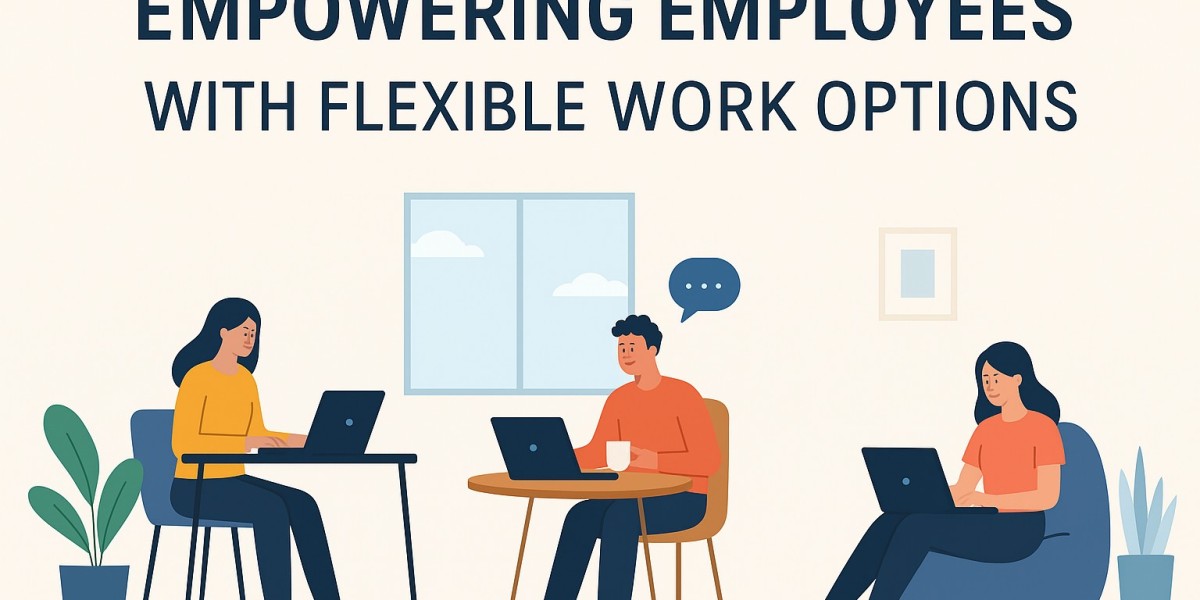In today's evolving workplace, flexible work options have shifted from being a perk to a strategic imperative. As organizations navigate talent shortages, rapid technological change, and rising employee expectations, flexibility is no longer optional — it's foundational to building a resilient, innovative workforce.
Table of Contents
What Do Flexible Work Options Really Mean
Why Flexible Work Is a Business Imperative
Rethinking Work Policies for a Diverse Workforce
Technology That Enables Flexibility
Trust, Autonomy, and Measuring Outcomes
Tackling Inequities: The Flexibility Gap
The Future of Work and the Next Frontier
A Framework to Put Flexibility into Action
1. What Do Flexible Work Options Really Mean
Flexible work isn't just about remote vs office. It spans multiple dimensions — where people work, when they work, how much they work, and even what their role looks like day-to-day. These options can include fully remote, hybrid, compressed workweeks, part-time schedules, and even job sharing. When implemented thoughtfully, flexibility empowers employees to design work in a way that aligns with their lives.
2. Why Flexible Work Is a Business Imperative
Organizations are increasingly viewing flexible work not just as an HR benefit but as a core driver of performance and retention. Flexibility boosts engagement, reduces turnover, and enhances employer branding — especially for younger talent who prioritize autonomy and trust. Moreover, giving employees control over their work arrangements can signal resilience and adaptability, both to internal teams and external stakeholders.
3. Rethinking Work Policies for a Diverse Workforce
Rigid policies rarely meet the needs of a truly diverse workforce. Instead, companies should design dynamic frameworks that evolve with regulations, demographics, and culture. For example, introducing pilot programs can help test flexibility models, while feedback loops ensure policies are refined rather than static. It’s key to ask whether policies really empower employees or just check a box.
4. Technology That Enables Flexibility
Technology plays a critical enabling role for flexible work. Collaboration platforms, AI-driven scheduling tools, and performance analytics systems help distributed teams stay connected and aligned. Emerging “work orchestration” platforms can unify workflow, learning, and performance data — but they must be backed by strong governance, especially around data privacy and security.
5. Trust, Autonomy, and Measuring Outcomes
Balancing freedom with accountability is one of the most sensitive leadership challenges. Rather than tracking hours, forward-thinking organizations are reimagining performance metrics around outcomes. By shifting to outcome-based KPIs, teams can foster creativity and trust, while also ensuring clarity on responsibility.
6. Tackling Inequities: The Flexibility Gap
Not everyone gets the same level of flexibility. While knowledge workers may enjoy full autonomy, frontline or administrative staff often face tight constraints. Addressing this “flexibility gap” requires layered approaches — such as staggered shifts, role redesign, or rotating duties — so that all employees can access meaningful choices.
7. The Future of Work and the Next Frontier
Looking ahead, AI and personalization will further revolutionize flexible work. By 2027, organizations may tailor work models to individual preferences, performance patterns, and life situations. Sustainability will also shape flexibility agendas, with companies reducing commuting footprints and embedding greener practices into how and where work happens.
8. A Framework to Put Flexibility into Action
To translate flexibility from theory into practice, leaders can follow a structured approach:
Audit existing policies for gaps or inequalities
Run pilots with different flexible models
Scale the models that succeed, while ensuring cultural alignment
Continuously collect feedback and benchmark against industry standards
Key guiding questions include: Are we measuring outcomes versus hours? Are all roles — not just office-based ones — able to access flexibility? Are we embedding compliance, inclusion, and security into every flexible work design?
For More Info: https://hrtechcube.com/empowering-employees-with-flexible-work-options/
Conclusion
Flexible work options are no longer an optional bonus — they are a fundamental component of modern workforce strategy. By embracing flexibility as a mechanism for trust, innovation, and resilience, organizations can unlock new levels of engagement and long-term competitiveness. When implemented with purpose, flexible models not only support individual empowerment, but also reinforce stronger, more adaptive institutions.








